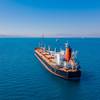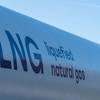Shuttle tankers are an alternative to subsea pipelines. Typically for large water depths. For harsh weather operation the use of shuttle tankers is a necessity. DNV GL has incorporated the latest findings related to their design, operation and safety in an updated shuttle tanker paper.
Shuttle tankers transport crude oil from offshore oil fields to terminals where use of subsea pipelines are not feasible. Major deployment areas include the North Sea and the Brazilian offshore fields.
The global fleet has been growing steadily for decades, comprising 88 ships by the end of 2016. Two owners, Teekay Corporation and Knutsen NYK, account for 62 per cent of the fleet, and 64 per cent of all shuttle tankers are DNV GL-classed. Ship sizes vary between 95 and 155,000 dwt, where the larger sizes are typically operate in Brazil.
Nine newbuilds are scheduled for delivery in 2017/2018, and one vessel on average is scrapped annually. 32 vessels are more than 16 years old and will require replacement in the near-to-medium term. Nearly 50 per cent of newbuilds have been built by Samsung Heavy Industries in South Korea.
Shuttle tankers differ from “standard” crude oil tankers. To increase the regularity during loading operations and for the purpose of collision avoidance, they are equipped with dynamic positioning (DP) systems, which typically includes azimuth and tunnel thrusters both forward and aft.
North Sea shuttles typically have a twin-screw propulsion system for redundancy and dynamic positioning purposes. In order to improve the position-keeping and manoeuvring capability in ballast condition, it is not uncommon that shuttle tankers have an increased ballast tank volume compared to standard crude oil tankers.
Vessels designed for operation in rough sea areas such as the North Sea feature a hull design with increased fatigue life. As shuttle tankers load offshore, they all have a bow loading arrangement. Some existing shuttle tankers were built with submerged turret loading (STL) systems required for serving specific North Sea oil fields.
Shuttle tankers operating on the Norwegian Continental Shelf may need to comply with Norwegian regulations for emissions of non-methane volatile organic compounds (NMVOC) and install complex vapour recovery process systems for that purpose.
Significant technological developments are ongoing with respect to utilizing the VOC as fuel for e.g. power generation purposes. Recent North Sea shuttle tankers use electrically rather than steam-driven cargo pumps. The consequence is that they typically have larger auxiliary engines, smaller boilers and inert-gas generators as opposed to flue gas systems.
North Sea shuttle tankers are typically provided with state-of-the-art nautical safety systems and bridge designs, and typically comply with enhanced fire safety and pollution prevention standards.










